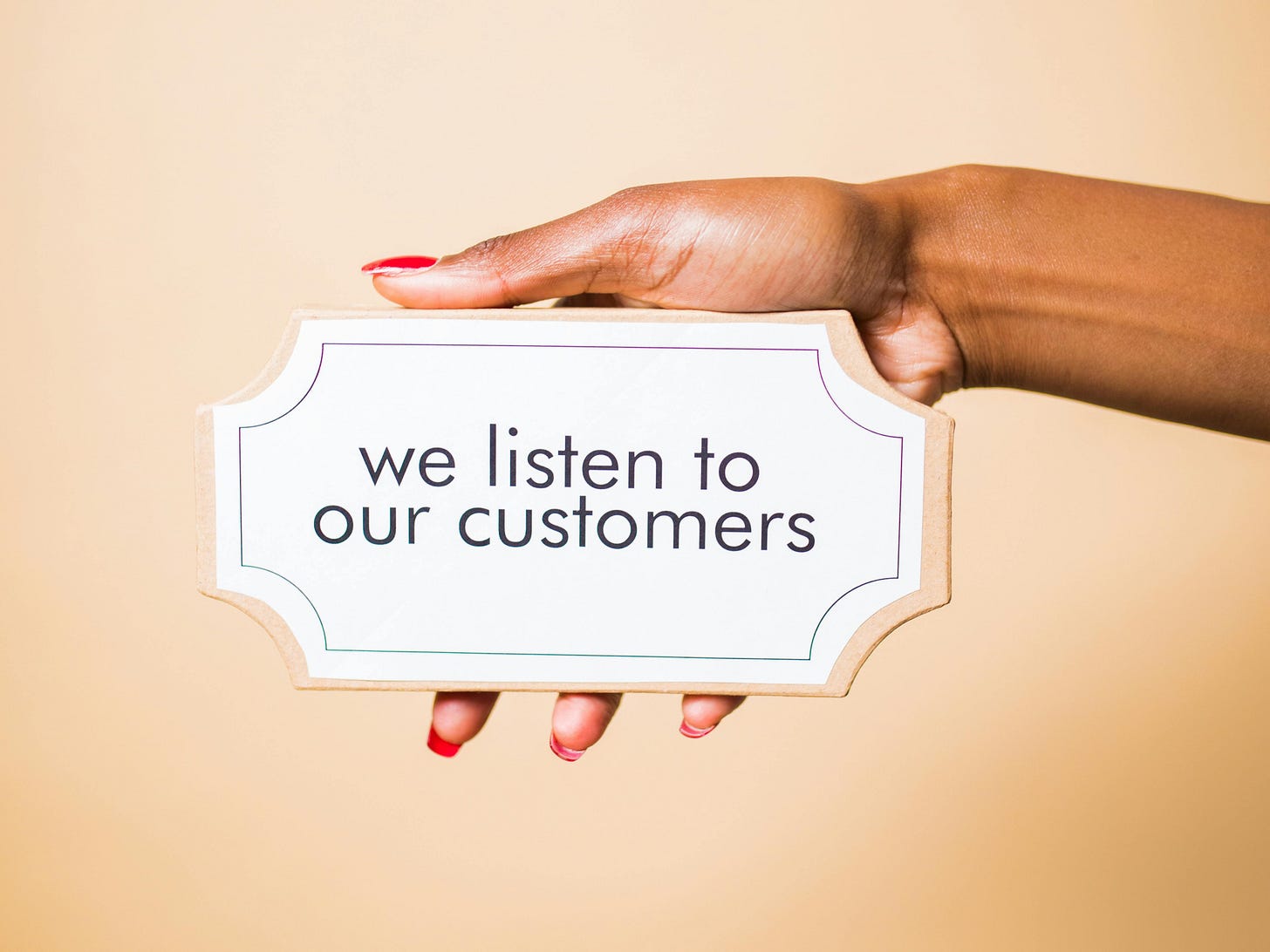Innovate to stay in the game
“Build something with amazing value that people are excited to pay for. Build a community culture designed to get members results and transformations they can’t get on their own.” — Gina Bianchini, founder of Mighty Networks.
In this edition:
Complementary products for unmet customer needs
Community-led growth starts with a retention mindset
A training plan that works for you
STORY
Creating value by innovating for the customer
In a previous edition we learned how to innovate for underserved customers from Dr. Murage of Savannah Hospital.
A key lesson was intentionally evolving with customers while scaling. Doing so requires an ability to spot opportunities and Bayer's latest product line demonstrates this.
They’re launching a suite of products to support customers as they age; a supplement, an app and a biological age test.
The core product here is the supplement which targets cellular health and resilience. The ageing test and lifestyle app are education products that allow the customer to personalise their health plan and track progress.
The complementary nature of the products sends a message to customers that they’re better off purchasing everything to get maximum value.
More importantly it engineers behaviour around proactive health management. So customers who experience positive results are likely to correlate confidence with the brand and recommend it to others using the same language.
“Our ageing journeys are unique to us all and new digital tools are enabling offerings to be more tailor made. With this multi-faceted approach, we're educating and enabling consumers to make informed decisions about their self-care in new and exciting ways.” — Julio Triana, president of Bayer’s consumer health division
A barrier to innovation during product development is the fear of overwhelming customers with too many products. Yet, your customers are buying these same products from other service providers.
A better focus may be gauging your customers’ unmet needs against your goals and considering what opportunities exist for you. That way, you’re not only known for a specific product but also the go-to solution provider in a specific niche.
SPOTLIGHT
Evolving needs and evolving solutions
“Daktari Smart” allows doctors to see and hear patient vitals from remote areas [Read]
Customers seek control over their health with on-demand classes re-emerging as a top trend over programs and personal trainers [Read]
More cost effective local research facilities needed to strengthen Africa’s herbal industry [Read]
Egyptian healthtech, Veezeta, launches innovation centre to promote fast payment solutions for users and doctors [Read]
EXPLAINER
Community-led growth can work
In a typical sales funnel, things seem to slow down after the customer makes a purchase. What happens to the goals behind their decision?
Acquisition and retention aren’t made equal. Think of acquisition as the start of a new journey where you offer value to the customer and in exchange they stick with your product.
We’ve previously looked at community as a customer retention tool but it can also serve as a growth engine for your business if done with intention.
What can you offer that is useful enough to customers to join your community and be actively involved? Their willingness to continue engaging with you after the sale moves them into the loyalty category of the funnel.
Here are two business owners who drove growth through community.
Nurses unite
For nurse Cat Golden, merchandise had always been her core business but she realised her customers, other nurses, were burnt out and needed direct support.
She built a community, Nurses Inspire Nurses, through a mentorship program and courses. Now she has somewhere to send new customers and offer value across multiple needs; clothing, education and social support which strengthens loyalty from the start.
She also does FAQs and sample sales as regular activities and the community is a marketing awareness tool for her merchandise business.
Mindful psychology
Elisha Goldstein, a psychologist, knew his mindfulness courses made an impact on his customers but the effects waned with time. Although he created a longer course, his customers kept asking, “what next?”
He realised people need a space with active engagement so he created a paid membership community around his course, The Mindful Living Collective.
Customers are guaranteed accountability which encourages high completion rates. It also reinforces the feeling of getting maximum value for money making it an easier referral.
Community-led growth is no overnight success but these business owners encourage others to design sales and product strategies with retention in mind.
DIY
Build your training plan
In our last edition we highlighted two doctors prescribing exercise as medicine.
Here are three considerations to make when choosing the best type of movement for you:
Goals: There are many goals beyond fat loss, there’s also endurance, flexibility, speed, power, sleep quality among others. Select a training style that you enjoy and aligns with your goal.
Health profile: If managing a health condition, exercise that directly aids in symptom relief is a great way to bake consistency into your training. Where needed, consult with a professional to determine the type and frequency.
Sustainability: Work with what you’ve got and only compete with yourself. Committing to daily stretching over running every other week is a great starting point to build the habit then add more movements.
Being innovative in business sounds good but feels distant for most.
Many business owners prefer to ‘stick to what works’ in their industries. This can work for some time, even a long time, but leaves a lot on the table. Customer needs keep evolving and where not fully met by one, they will seek and often find alternatives.
The entrepreneurs that are always asking questions are more likely to find the answers that create value for everyone — the owner, the employee & the customer. Win - win - win.
Stay active, keep innovating.





